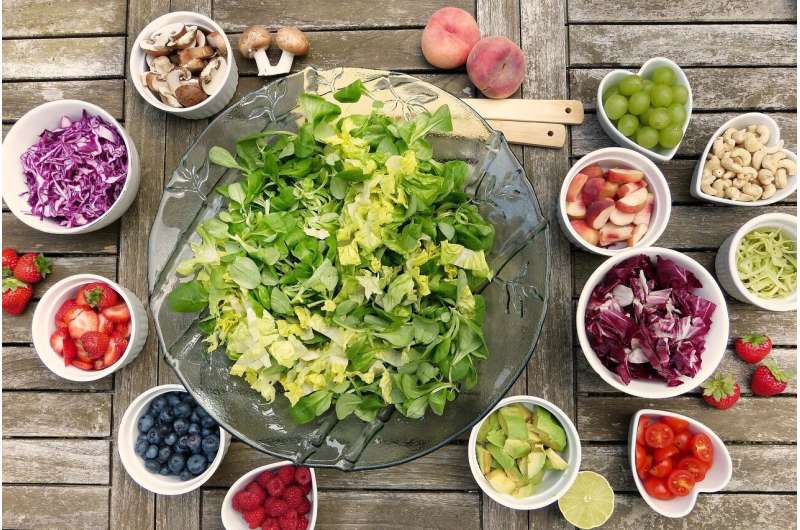Credit: CC0 Public Domain
Q: My kids are such picky eaters. How can I get them to try healthier options?
A: Picky eating in childhood, especially between 2 and 4 years old, is very common. It can cause a lot of mealtime conflict, with parents highly invested in children eating their vegetables and children highly invested in refusing to do so.
Recognizing that pickiness is normal and usually short-lived can make mealtimes more enjoyable. A low-key approach to picky eating can help kids come around and try a wider variety of foods. Here are some basic strategies to try:
- Whenever possible, eat family meals together and model healthy and adventurous eating. Children often watch and adapt habits from parents, older siblings and peers. When the rest of the family eats well-balanced meals that include fruits and vegetables, children are more likely to do the same.
- Follow regular and structured meal and snack times. Make it a rule that kids sit at the table to eat free of distractions and devices.
- Let your child to choose what and how much to eat from what's offered. At the same time, avoid offering separate meals or snacks if they refuse to eat. Include at least one food at meals and snacks that the child likes.
- Allow them to reject or refuse a food but offer it again later. It can take children 15-20 tries to like a new food. Repeated exposure may help a rejected food become a new favorite.
- Involve kids in helping to select, grow and cook foods. The more engaged they are, the more likely they will be to try the foods eventually.
You might also want to try these tips geared toward specific age and developmental stages:
During pregnancy: Make a habit of eating at least one unusual, new or bitter food a few times per week. The flavors pass into the amniotic fluid, giving your unborn baby an early "taste" of foods that they may then be more willing to eat later. Plus, the more you try new foods, the more you will grow to like and model eating them.
Infancy: Eating a wide variety of foods while breastfeeding can increase your child's exposure to those foods through breast milk. Making flavors more familiar decreases the chance your child will reject them in solid foods.
Once you do introduce solids at about 6 months old, offer one new food at a time, with a plan to include bitter vegetables, fish, and a little bit of spice from the very beginning. Introduce foods with a variety of textures and smells. (Once all the ingredients of a recipe have been introduced, it is fine to prepare them together.) Babies have immature taste buds, which make them open to eating just about anything their first year or so of eating solid foods. When starting solids, be sure the food is soft and small enough to prevent choking.
Toddler: Between 18 months and 2 years, many children start to show a dislike of unfamiliar foods, which is called "neophobia." Go with the flow while also making it a habit to eat family meals together. Resist the urge to force a child to eat or engage in mealtime battles. But don't cater to picky preferences, either.
Preschool: Engage preschoolers in the process of choosing and preparing foods. Kids are more likely to eat what they grow, choose, or prepare. Preschoolers tend to love garden-grown vegetables paired with a dip, sauce or nut butter.
School-age: Help kids learn where their food comes from by growing a miniature garden. Plant easy-to-grow foods that the child might otherwise resist trying, such as spinach or sweet peppers.
Adolescence: Make a commitment to eat family meals together at least 2 to 3 times per week. This makes it more likely a teen will eat a balanced meal, In addition, research shows shared family mealtimes can help strengthen family relationships and decrease the likelihood of risk-taking behaviors.
Task your teen with occasionally helping to choose and prepare meals, which will help them develop cooking skills. Require that the meal contain a protein, grain, fruit, and vegetable, but otherwise avoid the urge to micromanage what your teen chooses.
©2021 Tribune Content Agency, LLC.























